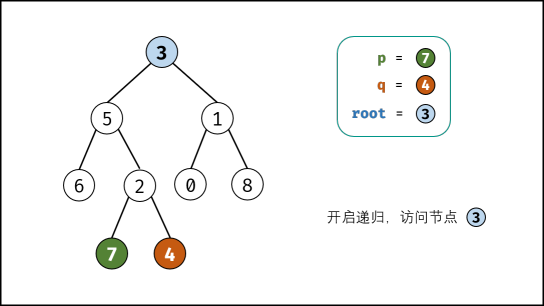一、前序遍历相关
二、中序遍历相关
题解报告LeetCode#230:二叉搜索树中第 K 小的元素
题意:LeetCode#230:二叉搜索树中第 K 小的元素
思路:中序遍历一套带走
代码:
class Solution {int count, res;public int kthSmallest(TreeNode root, int k) {if (root.left != null) kthSmallest(root.left, k);if (++count == k) res = root.val; // 注意不能在这里返回 // 妈的,可以在这里返回if (root.right != null) kthSmallest(root.right, k);return res;}}
题解报告LeetCode#530:二叉搜索树的最小绝对差
思路:中序遍历一波带走
代码:
class Solution {private int result = Integer.MAX_VALUE;private TreeNode preNode = null;public int getMinimumDifference(TreeNode root) {getMin(root);return result;}private void getMin(TreeNode root) {if (root == null) {return;}getMin(root.left);if (preNode != null) {result = Math.min(Math.abs(root.val - preNode.val), result);}preNode = root;getMin(root.right);}}
题解报告LeetCode#1382:将二叉搜索树变平衡
思路:
- 中序遍历(递归实现就可以了)
- 然后根据一个有序数组构造二叉搜索树
代码:
class Solution {public TreeNode balanceBST(TreeNode root) {List<Integer> nodes = new LinkedList<>();inOrder(nodes, root);int len = nodes.size();return buildBalanceBST(nodes, 0, len - 1);}private TreeNode buildBalanceBST(List<Integer> list, int start, int end) {if (start > end) {return null;}if (start == end) {return new TreeNode(list.get(start));}int mid = start + (start - end) / 2;TreeNode root = new TreeNode(list.get(mid));root.left = buildBalanceBST(list, start, mid - 1);root.right = buildBalanceBST(list, mid + 1, end);return root;}private void inOrder(List<Integer> list, TreeNode root) {// 递归一般还是采用这种直接将终止条件写出来的写法,比较能过脑if (root == null) {return;}inOrder(list, root.left);list.add(root.val);inOrder(list, root.right);}}
三、后序遍历相关
题解报告LeetCode#104:二叉树的最大深度
思路:后序遍历
代码:
class Solution {public int maxDepth(TreeNode root) {return root == null ? 0 : Math.max(maxDepth(root.right), maxDepth(root.left)) + 1;}}
题解报告LeetCode#111:二叉树的最小深度
思路:后序遍历,但是要注意,但左节点不为空,右节点为空,不能直接拿左节点来当作最小深度来 + 1,同理右节点。
代码:
class Solution {public int minDepth(TreeNode root) {return 0;}if (root.left == null) {return minDepth(root.right) + 1;}if (root.right == null) {return minDepth(root.left) + 1;}return Math.min(minDepth(root.left), minDepth(root.right)) + 1;}
题解报告LeetCode#236:二叉树的最近公共祖先
思路:

- 由于“最近公共祖先”的定义,它是一个向上传的过程,先知道了左右子树遍历的结果,然后自己才能操作,这是“后序遍历”;
- 如果 p 和 q 都非空,返回它们的公共祖先;
- 如果只存在一个;
- 如果 p 和 q 都不存在,则返回空。
代码:
public class Solution {public TreeNode lowestCommonAncestor(TreeNode root, TreeNode p, TreeNode q) {if (root == null || root == p || root == q) {return root;}TreeNode left = lowestCommonAncestor(root.left, p, q);TreeNode right = lowestCommonAncestor(root.right, p, q);// 下面两行代码不可能同时为空,因为题目保证 p 和 q 一定存在if (left == null) return right;if (right == null) return left;if (left != null && right != null) {return root;}return null;}}

